4. Basic types
Stratocaster
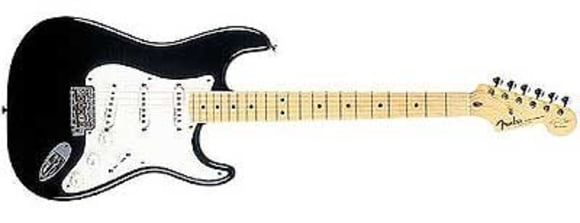
Fender Stratocaster
Under which name we label all guitars that have the truly legendary shape of a Fender Stratocaster.
First lets check out the classic version (3 single coils, ash or alder body). You can mostly choose between a sheer maple neck (blond) and one with a rosewood fret board (dark). There is probably no other guitar that fits the human body better (beer belly shaped) and that is more versatile apart from the newer Superstrat, which we will discuss later on.
The bridge pickup gives you a downright biting sound and the neck pickup provides a wonderful bluesy sound (treble can be reduced by using tone control). The intermediate positions (neck and middle, bridge and middle) provide rippling, almost acoustic clean sounds that only the Stratocaster can produce.
Furthermore there is the cool vibrato bar that you can do really funny things with. Compared to Gibson-type guitars, you can say that the typical Fender (Strat and Tele) sounds more percussive and slappy, while Gibsons seem to hum a little more and make life easier for the guitarist.
Les Paul
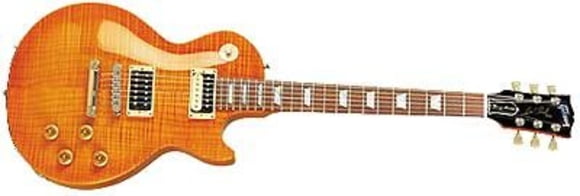
Gibson Les Paul (Paula)
Characteristics: Humbuckers and a fat and heavy body which tends to make it sound fatter without lacking a decent amount of treble and bite. The construction of the guitar is responsible for the sound which usually means a mahogany body with a sized maple top thats about one inch thick at the highest point. The bridge pickup provides the classic rock sound, while it gets bluesy round the neck (less gain on your amp, please). A headstrong hollow tone means the intermediate position is suitable for both clean and distorted sounds. By the way, the less husky PAF pickups (which are available under miscellaneous names by almost any brand) still suit a Les Paul best, although Gibson has started building in louder gauges recently as well.
Sometimes people accuse the Les Paul of not being as versatile as other guitars but with its three pickup positions together with the separate tone and volume controls for each pickup (a simple preset option if you like a real blessing, especially playing live) it is capable of producing quite a few different sounds. The alleged limits concerning its possibilities are, in the end, in the ear of the beholder.
Besides, the classic rock sound (or at least one important type of rock) is made by using a Les Paul and a tube amp stack at full blast.
SG
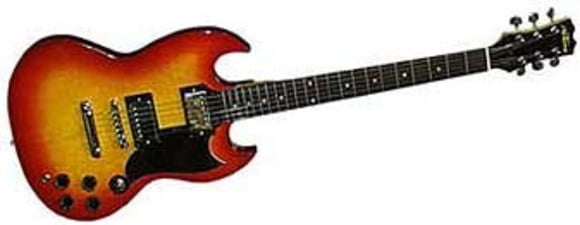
SG-guitar
A Les Paul variation that would have almost sunk in oblivion during the 80s and 90s were it not for AC/DCs Angus Young, is the SG which also went by the name of Les Paul in its first few years. Unlike both the Les Paul and Stratocaster, it is pretty light weight with less bass than a Les Paul but, nevertheless very dynamic and groovy which makes it a perfect guitar for blues and rock. Despite its Les Paul circuit it has an interesting and perfectly unique sound that originates from its mahogany body. Younger bands in particular have sported the SG for quite a few years now.
Telecaster
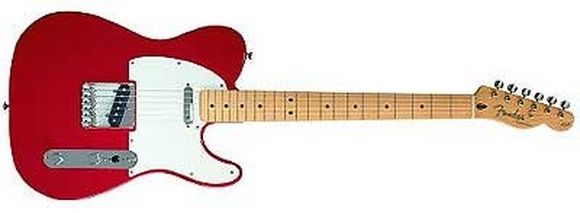
Fender Telecaster
Not only a country guitar, though it is, of course, just perfect for this genre. Similar to the Stratocaster, the single coil pickups are mandatory here. The well known trebly sound of the bridge pickup rocks pretty well when its slightly overdriven, while the neck pickup provides bluesy sounds. You can use a humbucker as the neck pickup as well; see Keith Richards (even if it doesnt necessarily take just 5 strings). The pedal-steel country sounds and Stones-style double-stops are what really sound best on this guitar. The famous twang sound stems from its bridge pickup together with the corresponding metal plate, a long scale, the typical ash body and a maple neck.
Semi acoustic guitars
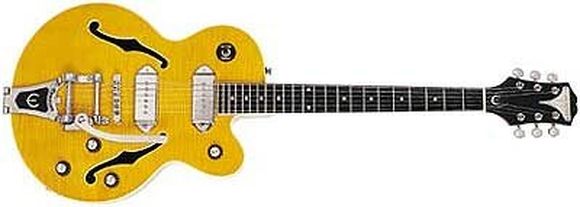
Semi acoustic guitar
These are the flat and hollow things. The unique distinction: guitars either with a sustain block - a massive block on the inside that extends through from the neck to the bridge e.g. the Gibson ES 335 or Epiphone Rivera - or without e.g. ES 335, Rickenbacker or Epiphone Casino. While the former sound similar to solid bodies (a little more dynamic, maybe a little less aggressive), the latter open up an entire new world with an extremely dynamic, open sound and a ringing acoustic direction). People who dig the the sound of The Beatles or Brit Pop need this type of thing. High gain sounds, however, produce a loud hooting sound in the speakers resulting in uncontrollable feedback you would probably want to pick a different guitar for this type of sound anyway. For clean or crunchy rhythm sounds and for blues stuff it is an absolute insider tip.
Superstrats
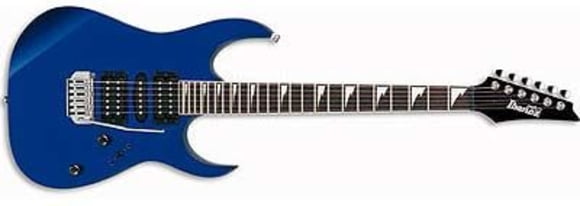
Superstrat
The concept is ingenious and although Eddie Van Halen may not have been the first to remove the bridge pickup, enlarge the cavity and replace the pickup with an old PAF, he was the one who made this brown-sound popular. Over the next years there were but a few young guitarists to be seen playing a Les Paul or a normal Strat let alone daring to use the neck pickup. Unlike Eddie, most of them kept the other pickups, and so the Superstrat was born. Awesome variations include a bridge pickup for rock sounds and a single coil in middle or neck position for more delicate work. The next step was a version with humbuckers in the neck and bridge position and a single coil in the middle which is usually wired to allow only one coil of the humbuckers to be switched on in intermediate positions producing a pure single coil sound (e.g. Steve Vais Ibanez models) and therefore making it exceedingly versatile. Todays versions usually have a detune-stable Floyd-Rose-style vibrato unit.
You shouldnt, however, expect this guitar to deliver just any sound you care to think of; its longer scale and differing woods on the bridge humbucker will never sound exactly like a Les Paul, and the Strats bridge single coil will never be matched, though there are lots of possible switching combinations. For those who dont really cling to these sounds, the versatility of the Superstrat really outplays any other guitar type.
By the way, a cool version of the Superstrat is the Eric Clapton Strat: three modern, low-noise pickups sound pretty authentic with a built-in mid-boost for more humbuckerish sounds.
What else?
Just as suitable but more unusual!
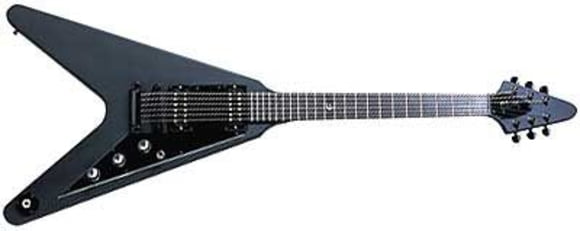
Flying V
Flying V- and Explorer types basically originating from the Les Paul department, they still are the weapon of choice for heavy stuff!
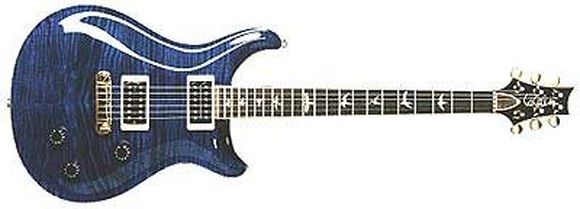
Paul Reed Smith (PRS) guitar
Paul Reed Smith builds guitars that really can bridge the gap between Fender and Gibson. Even their scale is somewhere in between. There are also more affordable copies of this unique guitar that have become more and more popular.
And then there are scores of manufacturers who make excellent variations or copies of the types mentioned above: Epiphone, Yamaha, Squier, Musicman, Peavy, Washburn, Hamer, Guild,... all make excellent guitars and many of them are more affordable than the prototypes on which theyre based. By the way, Fenders made in Japan or, even lower-priced, Mexican models are pretty good and way cheaper than USA-models
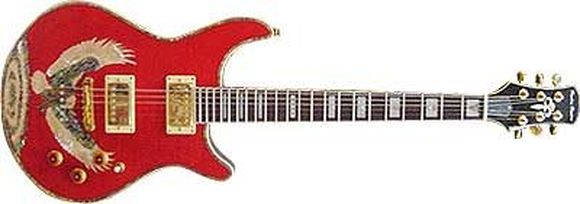
Harley Benton guitar
This would be also good opportunities to mention Harley Benton guitars here, which are exclusively distributed by Musikhaus Thomann and are, together with the advantage of house-to-house-distribution, an unbeatable choice in terms of value for money. These well tried and tested guitars dont lower expectations in terms of quality and are a perfect solution for beginners who want a top-quality instrument at an affordable price.
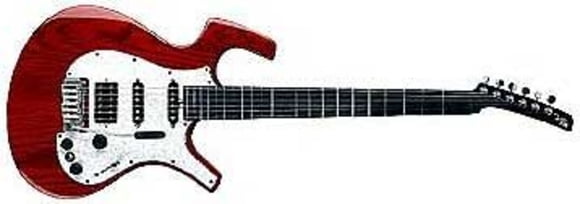
Parker guitars
Parker builds probably the most cutting-edge guitars. Extremely light bodies made of synthetic material together with piezo pickups for additional acoustic sounds and unique shapes, all come together to create a truly excellent sound.
Apart from this, every renowned brand offers so called signature models guitars that have been practically custom made for a star. However, while it may look cool to follow someones lead, think twice. The exact same equipment of a star doesnt necessarily mean the exact same sound. At some point in the future, you might pick up on another guitarists style or want to create your own sounds and then youll be faced with the prospect of having wasted tonnes of money on something that ends up rotting in a dark corner of your room.
When I started playing guitar, I could only afford crappy axes which you rarely find nowadays. Choosing a good guitar, nowadays, isnt quite such hard work anymore. You can easily find playable, good-sounding instruments even at lower price-ranges which can be significantly improved later on by exchanging certain parts (pickups, hardware). Our Hot Deals, in particular, contain many affordable guitars not only for beginners!











